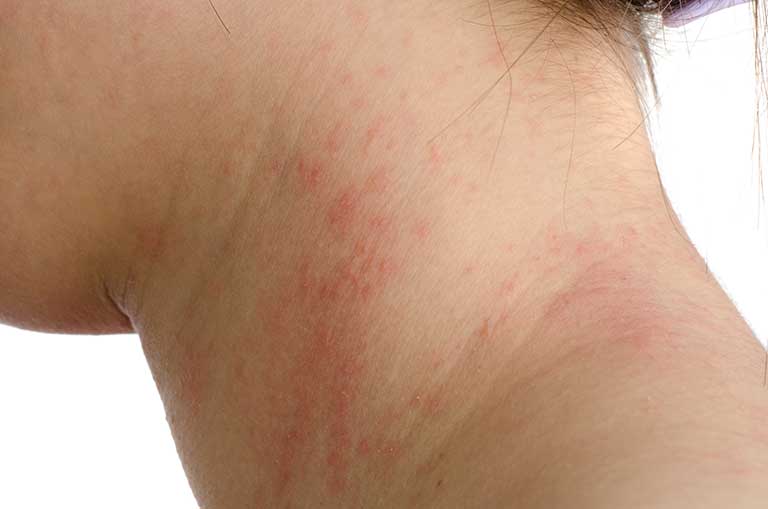All about Atopic dermatitis
Atopic dermatitis (AD), or atopic eczema, is a non-contagious chronic, inflammatory disease of the skin.

Symptoms and signs
AD is characterized by a non-contagious inflammation of the skin, associated with intense pruritus, which is usually worse at night. AD is one of the most pruriginous (itchy) skin diseases, and pruritus (itchiness) is the first symptom of relapse. In severe cases, patients scratch the areas with AD until bleeding occurs. A common problem in patients with AD is prolonged scratching at night with loss of sleep.
Patients with AD have significant sleep alterations due to the intense pruritus it causes. These alterations include difficulty to get to sleep, frequently waking up at night, and difficulty to wake up in the morning. Insomnia and decrease in total sleep time lead to drowsiness during the day, tiredness, irritability, decrease in concentration, alterations in growth hormone secretion, and behavioral and discipline problems.

AD symptoms are recurrent. While some patients have a persistently active chronic condition, most have symptoms that increase and decrease, alternating between an active disease and periods of remission.
Patients' skin shows red or brownish patches, dry, cracked or squamous skin (table 1). In infants, eczema generally occurs as small bumps on the cheeks, while older children and adults usually have rashes on knees or elbows (often in the folds of the joints), on the back of hands or on the scalp (table 2).
Table 1. Skin characteristics associated with AD in children and adults.
| Atopic pleat | Extra fold of skin that develops under the eye |
| Cheilitis | Inflammation of the skin and around the lips |
| Hyperlinear palms | Higher number of wrinkles in the skin of the palms. |
| Hyperpigmented eyelids | Darkened eyelids due to inflammation or hay fever. |
| Ichthyosis | Dry, rectangular scales in the skin. |
| Keratosis pilaris | Small rough bumps, usually on the face, upper arms and thighs. |
| Lichenification | Thick, leathery skin as a result of constantly scratching and rubbing. |
| Papules | Small raised bumps that may open when scratched, becoming crusty and infected. |
| Urticaria | Red raised bumps that may appear after exposure to an allergen, at the outbreak, after exercising or a hot bath. |
Table 2. Areas of the body where clinical manifestations of AD may appear by age.
| Babies (0–2 years) |
|
| Childhood (2 years until puberty) |
|
| Adolescence/adulthood |
|
References
- Avena-Woods C. Overview of atopic dermatitis. AJMC. 2017;1–10.
- Kapur, S., Watson, W., Carr, S. Atopic dermatitis. Allergy Asthma Clin Immunol. 2018;14(s2):1–10.
- Nutten, S. Atopic dermatitis: global epidemiology and risk factors. Ann Nutr Metab. 2015;66:8–16.
- Darsow, U., Raap, U., Ständer, S. Chapter 3 Atopic Dermatitis. NCBI Bookshelf A Serv Natl Libr Med Natl Institutes Heal. 2014;21:1–12.
- Wong, ITY., Tsuyuki, R.T., Cresswell-Melville, A., Doiron, P., Drucker, A.M. Guidelines for the management of atopic dermatitis (eczema) for pharmacists. Can Pharm J. 2017;150(5):285–97.
